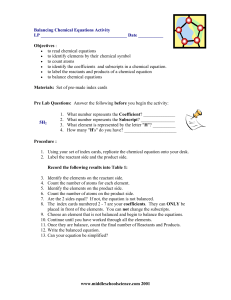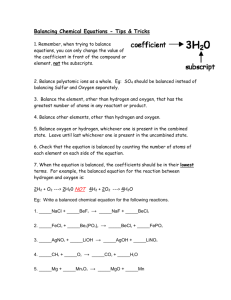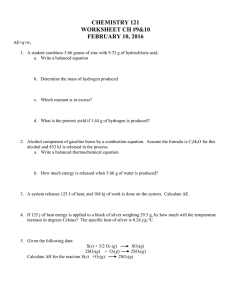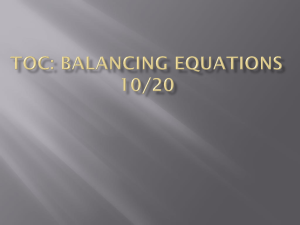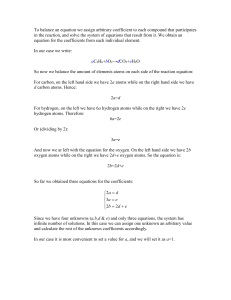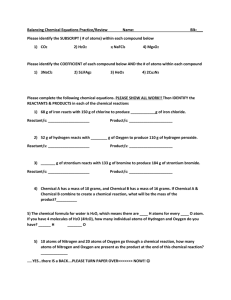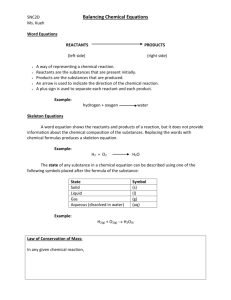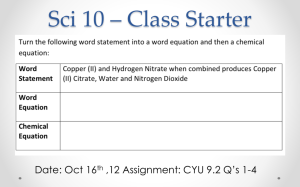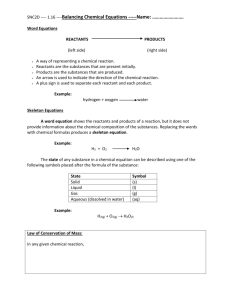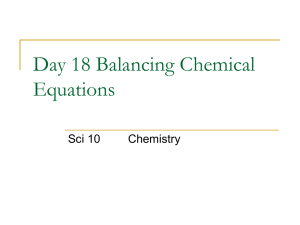Balancing Chemical Equations - Tips & Tricks
advertisement
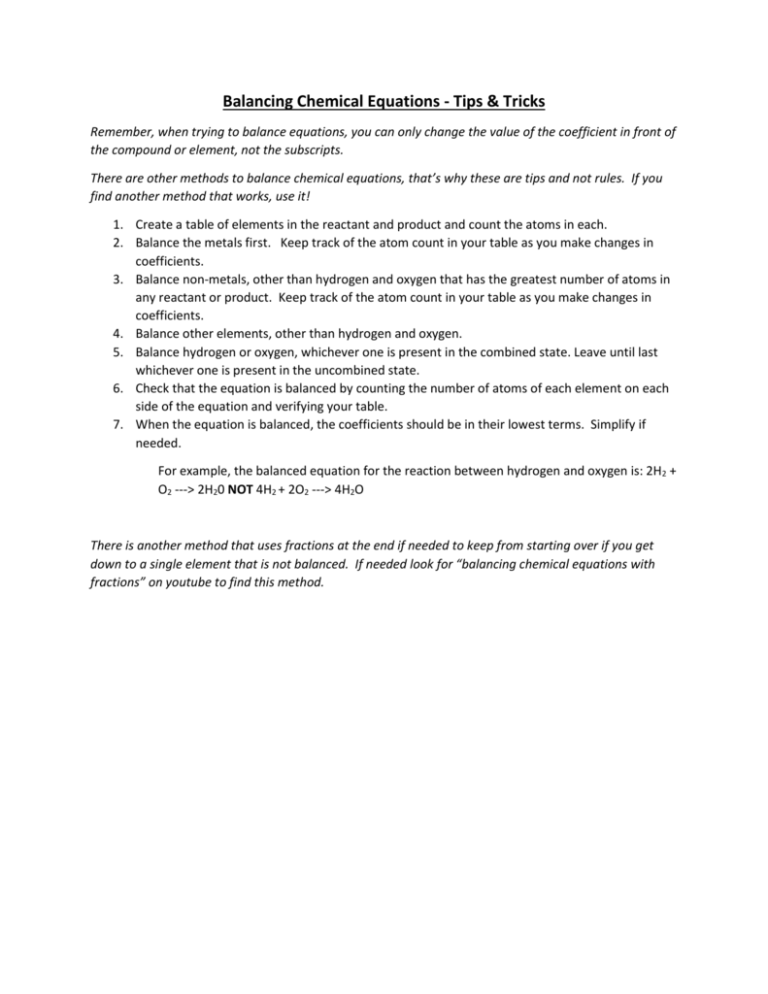
Balancing Chemical Equations - Tips & Tricks Remember, when trying to balance equations, you can only change the value of the coefficient in front of the compound or element, not the subscripts. There are other methods to balance chemical equations, that’s why these are tips and not rules. If you find another method that works, use it! 1. Create a table of elements in the reactant and product and count the atoms in each. 2. Balance the metals first. Keep track of the atom count in your table as you make changes in coefficients. 3. Balance non-metals, other than hydrogen and oxygen that has the greatest number of atoms in any reactant or product. Keep track of the atom count in your table as you make changes in coefficients. 4. Balance other elements, other than hydrogen and oxygen. 5. Balance hydrogen or oxygen, whichever one is present in the combined state. Leave until last whichever one is present in the uncombined state. 6. Check that the equation is balanced by counting the number of atoms of each element on each side of the equation and verifying your table. 7. When the equation is balanced, the coefficients should be in their lowest terms. Simplify if needed. For example, the balanced equation for the reaction between hydrogen and oxygen is: 2H2 + O2 ---> 2H20 NOT 4H2 + 2O2 ---> 4H2O There is another method that uses fractions at the end if needed to keep from starting over if you get down to a single element that is not balanced. If needed look for “balancing chemical equations with fractions” on youtube to find this method.
